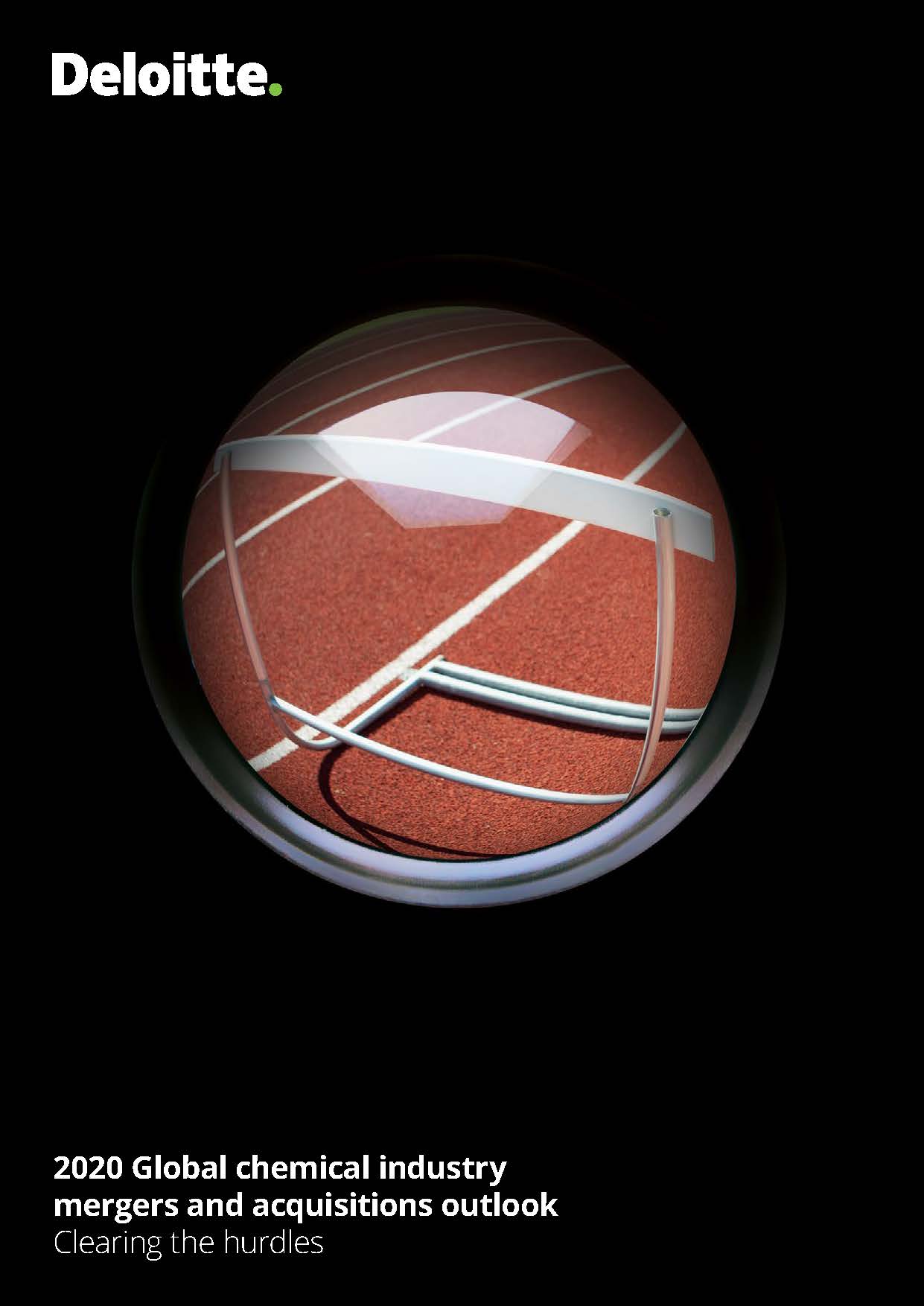2020 Global chemical industry mergers and acquisitions outlook has been saved

Article
2020 Global chemical industry mergers and acquisitions outlook
Clearing the hurdles
Continued trade tensions, geopolitical events, and slowing economies are creating constant barriers to mergers and acquisitions across industries and regions. However, M&A activity in the chemicals industry is predicted to display strong growth in 2020, even amidst uncertainties. How can the chemicals industry overcome these hurdles and nourish continued M&A activity in 2020?
Executive summary
In 2019, global chemical M&A volume dropped by three percent from 2018. However, the industry displayed robust M&A activity even amidst global uncertainties. With continued trade tensions, geopolitical events and slowing economies forming barriers to growth, can the chemicals industry overcome these hurdles and nourish continued M&A activity in 2020?
How will the trends observed in 2019 impact the industry in 2020? Which chemical sectors will drive M&A activity? Will the increasing challenges faced by the chemical industry reduce M&A or incentivize players to use M&A to grow? Will chemical companies and private equity be more hesitant to pull the trigger on acquisitions, or will the hesitancy be outweighed by the tailwinds of abundant capital and low interest rates? The 2020 Global chemical industry mergers and acquisitions outlook answers these questions and examines the deal activity across major markets and sectors.
Regional outlook
In 2019, mergers and acquisitions in the chemicals industry leaned towards Asia with Japan, Korea, and China implying the region’s overall strong growth. Below are some insights on M&A activity in key geographies:
- US: Deal activity saw an upturn in the latter half of 2019 as interest rates and the stock market moderated and investors chose to look past trade tensions. It remained the most active market for M&A transactions and is listed among the markets with most value transacted.
- UK: Uncertainties from Brexit outweighed the M&A activity in 2019 which was relatively flat as compared to 2018 and led to a decrease in outbound M&A deal volumes by 50%.
- China: Domestic consolidation across chemicals sectors and the constant pricing for domestic IPOs may increase inbound acquisitions by foreign buyers.
- Germany: Acquisition of new technological capabilities and divestment of non-core assets defined growth in M&A activity in the region.
- India: Chemicals M&A deal value rose by nearly US$500 million in 2019, although deal volumes declined as compared to 2018 as the economy’s growth rate began to slow.
- Japan: Despite economic downturn, the continued need for accelerating portfolio transformation is driving chemicals M&A activity in the country.
- The Netherlands: After a successful 2018, chemical M&A activity slowed down in 2019. A sluggish automotive sector, uncertainty around global trade, and upheaval around CO2-emissions are the primary reasons.
- Brazil: M&A growth can be expected in 2020 owing to the projected increase in GDP, decreased interest rates, and the local Government’s privatization agenda which includes downstream chemical assets.
Sector outlooks
- M&A deal volume of commodity chemicals registered an increase in 2019 over 2018 but is still below the 2014–2017 period. Interestingly, some commodity chemical companies might use their cash flow for M&A as they seek growth in adjacent products and end markets.
- While the volume for M&A deals in intermediates and specialty chemicals declined by six percent compared to 2018, the valuation multiples remained strong. Activity is majorly driven by acquisitions of products carved out of larger companies that are looking to optimize their portfolios.
- Trade disputes and weak agricultural commodity prices will continue to hinder M&A activity in the fertilizers and agricultural chemicals category.
- Industrial gas deal values were lower than in the past few years and most of the activity was focused on Asia.
Previous versions
- 2019 Global chemical industry mergers and acquisitions outlook
- 2018 Global chemical industry mergers and acquisitions outlook
- 2017 Global chemical industry mergers and acquisitions outlook
- 2016 Global chemical industry mergers and acquisitions outlook
- 2015 Global chemical industry mergers and acquisitions outlook

